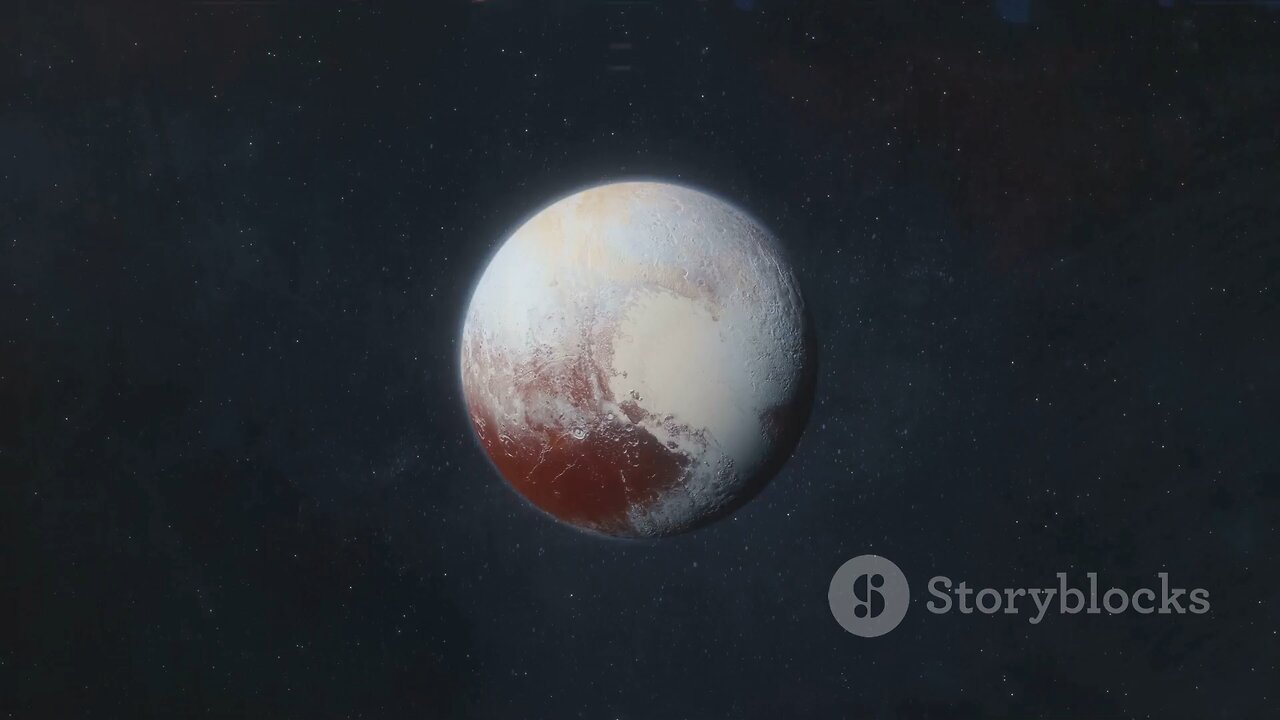Premium Only Content

plouto mystry..🤯🤯🥶
Pluto, once considered the ninth planet in our solar system, has always been a subject of intrigue and mystery. It was discovered in 1930 by astronomer Clyde Tombaugh, but it wasn’t until 2006 that it was reclassified as a "dwarf planet" by the International Astronomical Union. Despite its small size, Pluto has sparked curiosity due to its distant, icy, and enigmatic nature.
Pluto resides in the Kuiper Belt, a vast region of icy bodies beyond Neptune. It has a peculiar, highly elliptical orbit, taking it closer to the Sun than Neptune for a brief period. This orbit is one of the reasons why Pluto has fascinated scientists for decades. Additionally, Pluto’s surface is covered with frozen methane, nitrogen, and carbon monoxide, giving it a bizarre and beautiful landscape.
What makes Pluto even more intriguing is its five known moons, with Charon being the largest. The relationship between Pluto and Charon is unique, as they revolve around a common center of mass that lies between them, making it seem like a double dwarf planet system.
The most recent mission to Pluto, NASA's New Horizons, flew by in 2015 and provided breathtaking images and data. This mission revealed Pluto’s complex geology, including mountains made of water ice and vast plains of frozen nitrogen. The flyby also unveiled a mysterious heart-shaped region, dubbed the "Tombaugh Regio," which captured the public's imagination.
The mystery of Pluto goes beyond its size or orbit—scientists are still trying to understand its internal structure, the origins of its moons, and its potential for harboring ancient traces of the solar system's early days. Pluto's status as a dwarf planet hasn’t diminished its allure; instead, it continues to be a symbol of the vast, unexplored wonders that still lie at the edges of our solar system.
-
 1:02:36
1:02:36
Candace Show Podcast
1 hour agoHYPOCRISY: Blake Lively Improvised Grabbing Her Co-Star's Private Parts | Candace Ep 170
29.4K22 -
 2:11:38
2:11:38
The Quartering
4 hours agoFauci's Wife FIRED, Huge FBI Chat Log LEAK, Trans Mass Shooter Coverup, Liberation Day & More
176K126 -
 1:44:56
1:44:56
Darkhorse Podcast
4 hours agoUnfairness and the West: The 270th Evolutionary Lens with Bret Weinstein and Heather Heying
42.6K13 -
 LIVE
LIVE
Dr Disrespect
6 hours ago🔴LIVE - DR DISRESPECT - PGA TOUR 2K25 - ONLINE RANKED UNDEFEATED
2,180 watching -
 36:24
36:24
The Brett Cooper Show
1 day ago $6.72 earnedSnow White. What Happened? | Episode 18
51.9K44 -
 1:16:39
1:16:39
The HotSeat
2 hours agoThe Passing Of An Icon + The Dumbest Statements Of The WEEK!!!
18.9K1 -
 1:09:53
1:09:53
Jeff Ahern
2 hours ago $0.87 earnedNever Woke Wednesday with Jeff Ahern (1pm Pacific)
24.8K2 -
 18:24
18:24
Talk Nerdy Sports - The Ultimate Sports Betting Podcast
2 hours ago4/2/25 - AI Drops a +2000 Parlay Nuke & Vasil’s Back to Talk His 💩
17.5K1 -
 58:56
58:56
Crypto Power Hour
5 hours ago $0.66 earnedThe #1 Crypto Show On Rumble! ‘In Crypto We Trust |EP09
28.4K3 -
 LIVE
LIVE
LFA TV
18 hours agoLFA TV - ALL DAY LIVE STREAM 4/2/25
914 watching